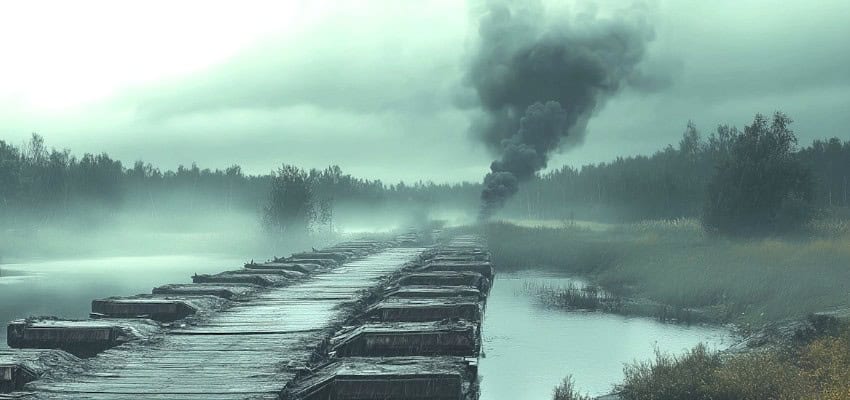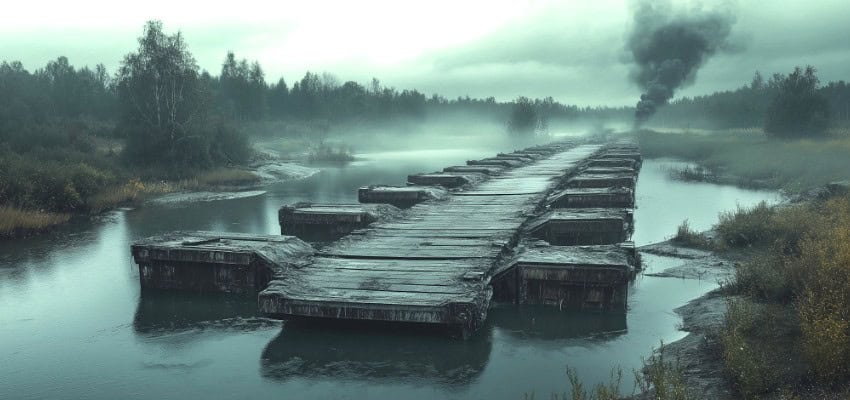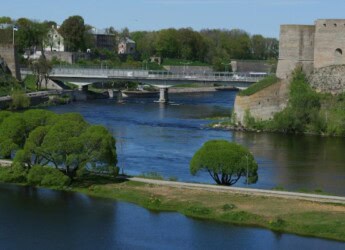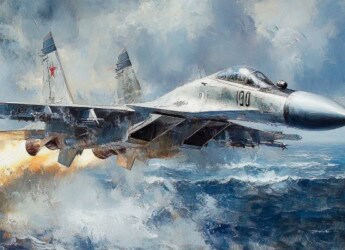Editor’s Note: This report provides a detailed analysis of recent developments as of September 7, 2024, in the ongoing Russian-Ukrainian conflict, with a specific focus on Ukraine’s incursion into Kursk Oblast and Russia’s concentrated efforts near Pokrovsk. It highlights the broader strategic implications of these operations, particularly as both sides prepare for the logistical and tactical challenges of the upcoming winter months. The information is derived from the Institute for the Study of War’s latest assessment and offers a factual, in-depth perspective on the evolving situation on the ground. Readers are encouraged to review this analysis in the context of the broader conflict dynamics to understand the shifting strategies and their potential impact on the future course of the war.
For those seeking to grasp the full scope of this evolving landscape, the complete updates from the Institute for the Study of War serve as an invaluable resource.
Content Assessment: Ukraine’s Incursion into Kursk Oblast Disrupts Russian Offensive Strategy
Information - 92%
Insight - 93%
Relevance - 90%
Objectivity - 92%
Authority - 95%
92%
Excellent
A short percentage-based assessment of the qualitative benefit expressed as a percentage of positive reception of the recent article from ComplexDiscovery OÜ and based on ISW reports, titled, "Ukraine’s Incursion into Kursk Oblast Disrupts Russian Offensive Strategy."
Background Note: ComplexDiscovery’s staff offers distinctive perspectives on the Russo-Ukrainian war and Iran-Israel conflict, informed by military experience on the West German, East German, and Czechoslovakian border during the Cold War and in Sinai as part of Camp David Accord compliance activities. This firsthand regional knowledge has been further enhanced by recent staff travels to Eastern European countries, including Estonia, Latvia, Lithuania, and Poland. These visits have provided up-to-date, on-the-ground insights into the current geopolitical climate in regions directly impacted by the ongoing conflict.
Combined with cybersecurity, information governance, and eDiscovery proficiency, this multifaceted experience enables comprehensive analysis of these conflicts, including the critical impact of cyber warfare, disinformation, and digital forensics on modern military engagements. This unique background positions ComplexDiscovery to provide valuable insights for conflict-related investigations and litigation, where understanding the interplay of technology, data, and geopolitical factors is crucial.
Russo-Ukrainian Conflict Update*
Ukraine’s Incursion into Kursk Oblast Disrupts Russian Offensive Strategy
ComplexDiscovery Staff
The ongoing Russian-Ukrainian conflict continues to evolve, with recent developments reflecting shifts in strategy, logistics, and territorial control. A significant highlight in the conflict is Ukraine’s incursion into Russia’s Kursk Oblast, which is having a theater-wide impact on Russia’s military operations. Coupled with other key events, such as Russia’s increased use of Iranian-supplied missiles and Ukraine’s anti-drone advances, the latest updates provide insight into the dynamic shifts on the battlefield.
This report will focus on the major developments from the Russian campaign, particularly highlighting the strategic emphasis on Kursk Oblast and Pokrovsk.
Major Development: Ukrainian Incursion into Kursk Oblast
Ukraine’s Main Military Intelligence Directorate (GUR) Head, Lieutenant General Kyrylo Budanov, highlighted the significant impact Ukraine’s operations in Kursk Oblast have had on the broader conflict. In a statement on September 7, Budanov emphasized that the Ukrainian incursions disrupted Russia’s planned offensives, forcing the Kremlin to adjust its operations. The incursion has stretched Russian resources thin, prompting them to divert troops and equipment away from other strategic areas.
Notably, Russian forces are increasingly focusing on Pokrovsk, west and southwest of Donetsk City. According to reports, Russian advances near Pokrovsk have intensified, and the military command has prioritized this sector at the expense of other frontline areas. Despite this concentration of forces, Russian troops are facing significant manpower shortages. Russian military bloggers have reported that many units are understaffed and suffering from exhaustion, which has contributed to a slowing of their advances.
The situation in Kursk Oblast is marked by continuous engagements. Ukrainian forces have regained territory south of Khitrovka, while Russian troops have recently recaptured positions southeast of Korenevo. Footage from September 6 shows Ukrainian forces advancing in Kursk Oblast, demonstrating the ongoing nature of this operation. Russia has responded by deploying forces, including elements of the 155th Naval Infantry Brigade and the 83rd Airborne Brigade, but their progress remains hampered by attrition and Ukrainian resistance.
Ukraine’s strike capabilities in Kursk are further enhanced by attacks on Russian logistics. For example, Ukrainian forces targeted a Russian pontoon bridge across the Seim River with precision-guided munitions, disrupting Russian supply lines. Additionally, Ukrainian drone strikes on Russian air defense systems have successfully reduced Russian defensive capabilities in the region.
Other Key Developments
- Iranian Missile Deliveries to Russia: Iran recently delivered over 200 Fateh-360 short-range ballistic missiles to Russia. These missiles are likely to be used in upcoming Russian strikes on Ukrainian infrastructure, particularly during the fall and winter months. Russian forces have historically targeted Ukrainian energy facilities during these periods, and the newly supplied missiles are expected to escalate these attacks.
- Ukraine’s Anti-Drone Capabilities: Ukraine has continued to develop effective counter-drone technologies. Ukrainian electronic warfare (EW) systems have reportedly disrupted radar-guided Shahed drones, causing them to deviate from their paths and crash. Ukrainian forces are also using newly developed interceptor drones to target Russian UAVs. These efforts are crucial in offsetting the strain on Ukraine’s limited air defense systems, especially in light of delayed Western military aid.
- Pokrovsk and Donetsk City: Russian forces have advanced near Pokrovsk and continue their push towards key Ukrainian positions in Donetsk. The decision to concentrate forces near Pokrovsk underscores its strategic importance to Russian objectives. Despite recent territorial gains, the pace of Russian advances has slowed due to mounting casualties and resource shortages.
- Russian Advances in the Dnipro River Delta: Russian forces have made incremental advances on the islands of the Dnipro River Delta, continuing their positional engagements in southern Ukraine. These advances are part of a broader Russian strategy to consolidate their positions in southern Ukraine, which is essential for maintaining supply lines and securing rear areas against Ukrainian strikes.
Strategic and Operational Implications
The focus on Kursk Oblast reveals Russia’s concern with securing its own territory while simultaneously conducting offensive operations in Ukraine. The Ukrainian incursion into Russian territory has exposed weaknesses in Russia’s ability to manage multiple fronts effectively. This situation is exacerbated by logistical challenges, as evidenced by Ukraine’s targeting of Russian ground lines of communication (GLOCs) and military equipment in rear areas. The ongoing attacks on Russian infrastructure and supply lines, such as the strikes on Russian pontoon bridges, are likely to further strain Russian logistics.
In response, Russian forces have shown resilience in maintaining offensive operations, particularly around Pokrovsk. However, the attrition of personnel and materiel, combined with the broader impact of the Ukrainian incursion, suggests that Russia may find it increasingly difficult to sustain its current operational tempo. The shift in Russian focus to the Pokrovsk area highlights its strategic importance, potentially as a staging ground for further operations in the Donetsk region. Still, the shortage of manpower and exhaustion of forces in this area could lead to a culmination before Russia achieves its objectives.
Outlook for Winter 2024-2025
Both Russian and Ukrainian operations are likely to be complicated by winter weather. Lieutenant General Budanov noted that the fall mud season could hamper ground maneuvers for both sides. However, the freezing temperatures later in the winter may provide improved conditions for armored vehicles. Russia’s offensive in fall 2023 demonstrated that severe weather conditions are not enough to stall battlefield activity entirely, and it is expected that fighting will continue into the winter months, albeit with slower progress.
Ukraine’s focus on technological innovations, such as anti-drone systems and precision-guided munitions, will remain crucial in offsetting Russia’s numerical and material advantages. The coming winter months will test both sides’ logistical capabilities and the resilience of their respective forces.
Overall, Ukraine’s incursion into Kursk Oblast represents a significant development with far-reaching consequences for Russian operations in the region. The ability of Ukrainian forces to disrupt Russian logistics and stretch their resources will likely have a long-term impact on the conflict. Meanwhile, Russia’s concentrated efforts near Pokrovsk highlight the strategic significance of this area, but it remains unclear whether Russian forces can sustain their advances given the current levels of attrition. As winter approaches, both sides are preparing for a new phase in the conflict, with weather and logistical constraints playing a pivotal role in shaping the outcomes.
News Sources
As a leading source for cybersecurity, information governance, and legal discovery insights, including international investigations and litigation, ComplexDiscovery OÜ recognizes the importance of awareness regarding alleged and documented criminal acts, particularly in the context of the Russia-Ukraine conflict. While we, following the lead of the Institute for the Study of War (ISW), do not provide detailed coverage of war crimes in our primary reports, we encourage professionals within the eDiscovery ecosystem to stay informed about these activities. This awareness is crucial for understanding potential future legal actions and responsibilities.
Detailed Reporting with Maps for September 7, 2024, from the ISW – Mouseover to Scroll
Russian Offensive Campaign Assessment 090724Review the Detailed Reporting and Maps PDF
About the Institute for the Study of War Research Methodology
ISW’s research methodology relies on both primary and secondary sources, enabling researchers to develop a comprehensive understanding of the situation on the ground. In order to analyze military and political developments in any given area, ISW’s research analysts must wholly understand the systems of enemy and friendly forces. They must also understand the population demographics, physical terrain, politics, and history of that area. This lays the analytical foundation for understanding the reasons for particular developments and fulfilling their assigned research objectives. ISW analysts also spend time in places like Iraq, Afghanistan, and elsewhere in order to gain a better understanding of the security and political situation and to evaluate the implementation of current strategies and policies. Our researchers compile data and analyze trends, producing a granular analysis of developments in areas of research, producing an accurate, high-resolution, timely, and thorough picture of the situation. ISW’s research methodology guarantees its success and commitment to improving the nation’s ability to execute military operations, achieve strategic objectives, and respond to emerging problems that may require the use of American military power.
About the Institute for the Study of War
The Institute for the Study of War advances an informed understanding of military affairs through reliable research, trusted analysis, and innovative education. They are committed to improving the nation’s ability to execute military operations and respond to emerging threats in order to achieve U.S. strategic objectives. ISW is a non-partisan, non-profit, public policy research organization.
Learn more, get involved, and contribute today.
Additional Reading
- From Dissent to OSINT? Understanding, Influencing, and Protecting Roles, Reputation, and Revenue
- [Annual Update] International Cyber Law in Practice: Interactive Toolkit
- Data Embassies: Sovereignty, Security, and Continuity for Nation-States
Assisted by GAI and LLM Technologies
* Sourced and shared with direct express permission from the Institute for the Study of War (ISW).
Source: ComplexDiscovery OÜ


























